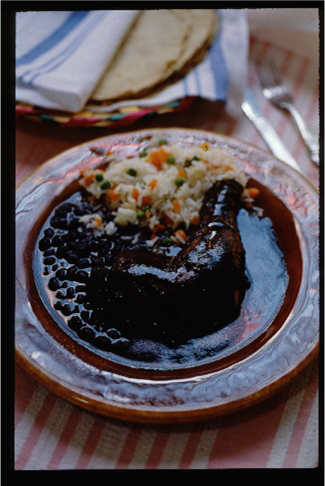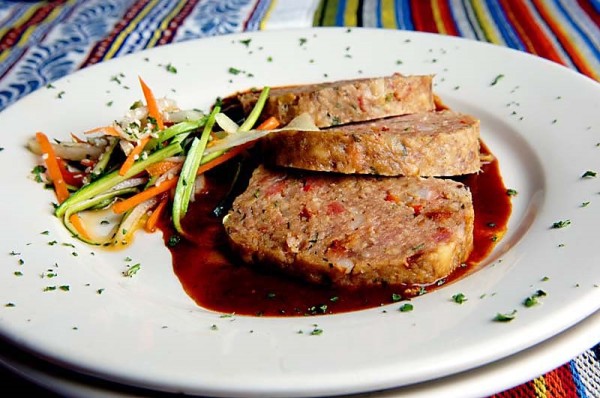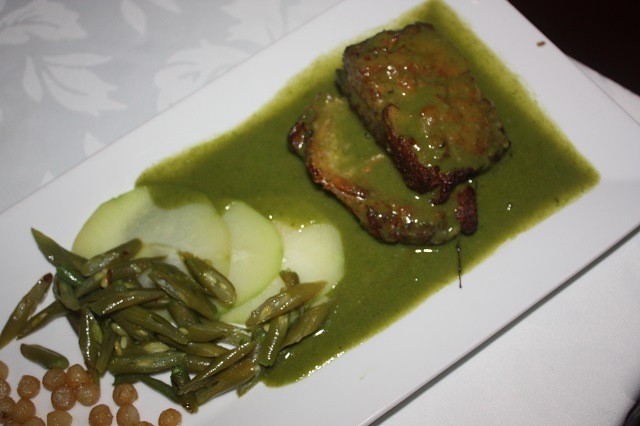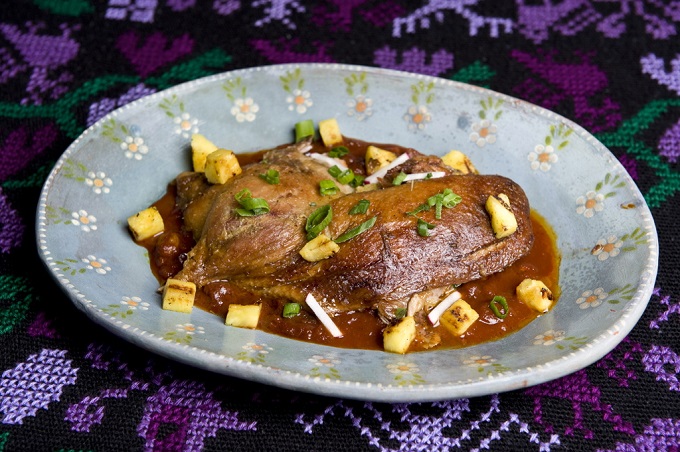I like to describe mole (pronounced mohleh not mohlay) as a main dish sauce because the sauce is the dish. In pre-Hispanic times moles were served with great ceremony. According to various accounts, the mole was presented in a bowl with no handles on one hand, while plain tamales or tortillas were held in the other. There was a time when practically all, or most people anyway, referred to mole as the “chocolate sauce.” Now Mexican food lovers know that a mole is simply, or complexly, a puréed sauce with the key ingredients being a thickener of some kind, be it nuts, seeds, bread, cookies, corn masa or dough, among others, and chile, either fresh green chiles, usually roasted according to the directions here, or dried and prepared as explained on this video. They also usually contain aromatics like garlic and onions, usually roasted on a griddle according to the directions on this video or and herbs and/or spices.
Photo Laurie Smith many, many years ago!
Canela (Ceylon soft stick cinnamon) is the most popular spice and is now widely available in supermarkets in the form of sticks that you will grind to order (I grind all my spices as I need them and have a dedicated coffee grinder for that purpose). Another commonly used but not as easily found herb are avocado leaves. Tarragon would be an acceptable substitute.
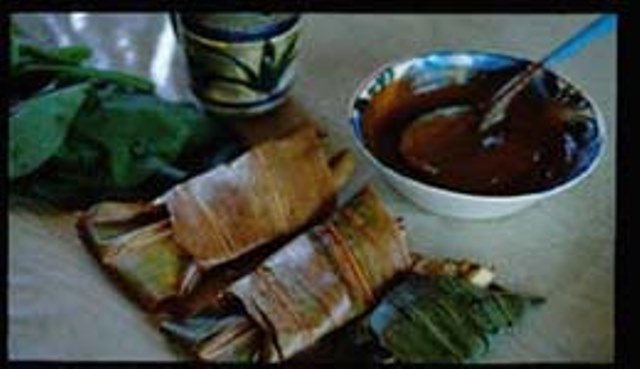 Photo by Laurie Smith
Photo by Laurie Smith
This is one of the seven major Oaxacan moles. There are two main kinds, each with infinite variations. (If you ask ten Oaxacan cooks about mole amarillo, you will probably get 10 quite different recipes and also realize that no one bothers to use the full name — the informal “amarillo” is enough.) One type, a dense, silky mole like a thick tomato sauce, usually functions as a filling. The other is thinned to any consistency between a heavy batter and a soup, and serves as the basis of stews and braised meat dishes. Actually, amarillo is not the only mole to be made with a lot of gradations between thick and thin. As you work with all these sauces I hope you will learn to experiment with consistency — Oaxacan cooks usually start with a thick paste as the basis of a mole and thin it more or less, depending on the purpose.
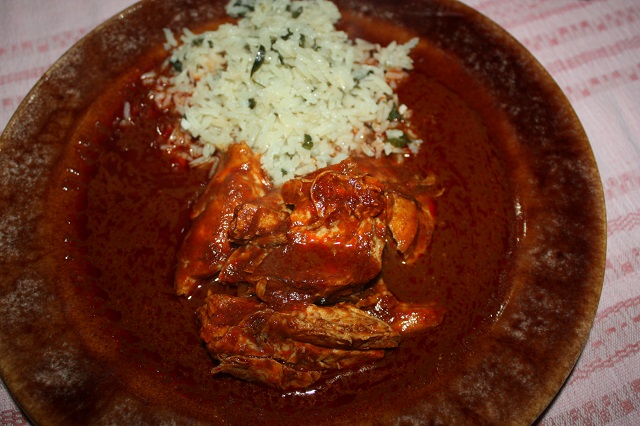 Photo by Pedro Luis de Aguinaga of the coloradito served in restaurant Tlamanalli in Teotitlan del Valle. This is not their recipe though.
Photo by Pedro Luis de Aguinaga of the coloradito served in restaurant Tlamanalli in Teotitlan del Valle. This is not their recipe though.
Call it mole coloradito if you want to stand on ceremony but everyone in Oaxaca just says “coloradito.” There are many versions, some made with chocolate and some without.
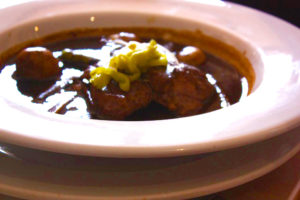
Photo by Pedro Luis de Aguinaga
Chichilo is one of the “burned” dishes of Oaxaca in which some ingredient must be well charred and blackened to give the right flavor. It is less rich and elaborate than a mole negro, but with a more complex intensity than some of the family. The thickening comes from masa, so it is less caloric than nut-thickened moles. It is also one of the few where specific meats — cubed stewing beef and pork — are a traditional part of the dish. Chichilo is often made with small masa dumplings called chochoyotes that are formed in the shape a little like old-fashioned “thimble” cookies and added to the sauce at the end.
Photo by Michael Sofronski
Mole verde, or just “verde” for short, is the lightest and freshest-tasting of Oaxaca’s “seven moles.” Fresh herbs rather than spice accents are what distinguish a mole verde. A purée of green herbs has to be added at the last minute.
 Photo by Michael Sofronski
Photo by Michael Sofronski
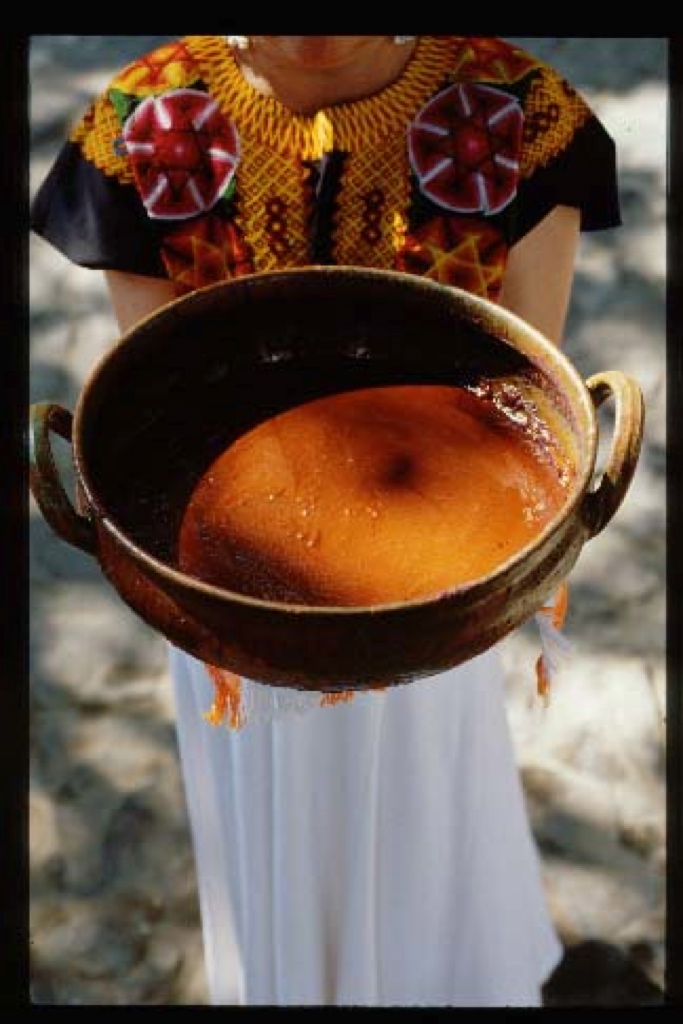 Photo by Laurie Smith
Photo by Laurie Smith
Isthmian Red Mole (Mole rojo del Istmo)
Like mole amarillo, mole rojo belongs to the lighter, simpler end of the seven-moles spectrum. This version from the Isthmus of Tehuantepec is one of my favorites for easy preparation and versatile uses. Like all moles, it goes perfectly with pork or chicken and is a great sauce for enchiladas.
photo by Michael Sofronski
Tablecloth Stainer Sauce (Manchamantel)
Unfortunately, we did not have Manchamantel in Oaxaca on my last trip there so we don’t have the actual picture that corresponds to the recipe. But. in a way, it’s good because it allows me to show you how we served the Chiapas state version of the sauce with roasted duck. When people ask me if I have a favorite recipe, I used to think that it was a ridiculous question. Now I can say this is it.
 Photo by Pedro Luis de Aguinaga
Photo by Pedro Luis de Aguinaga
Photo of the mole negro from La Catedral restaurant that is very different from this one, but this is the one I’ve tested .
Teotitlán-Style Black Mole (Mole negro de Teotitlán)
Mole negro is the state dish of Oaxaca, the king of moles. It also happens to be the most difficult to make. People pride themselves on their own different touches, and family recipes are passed down as heirlooms. Market stands specializing in moles all proclaim that their version is the best.

